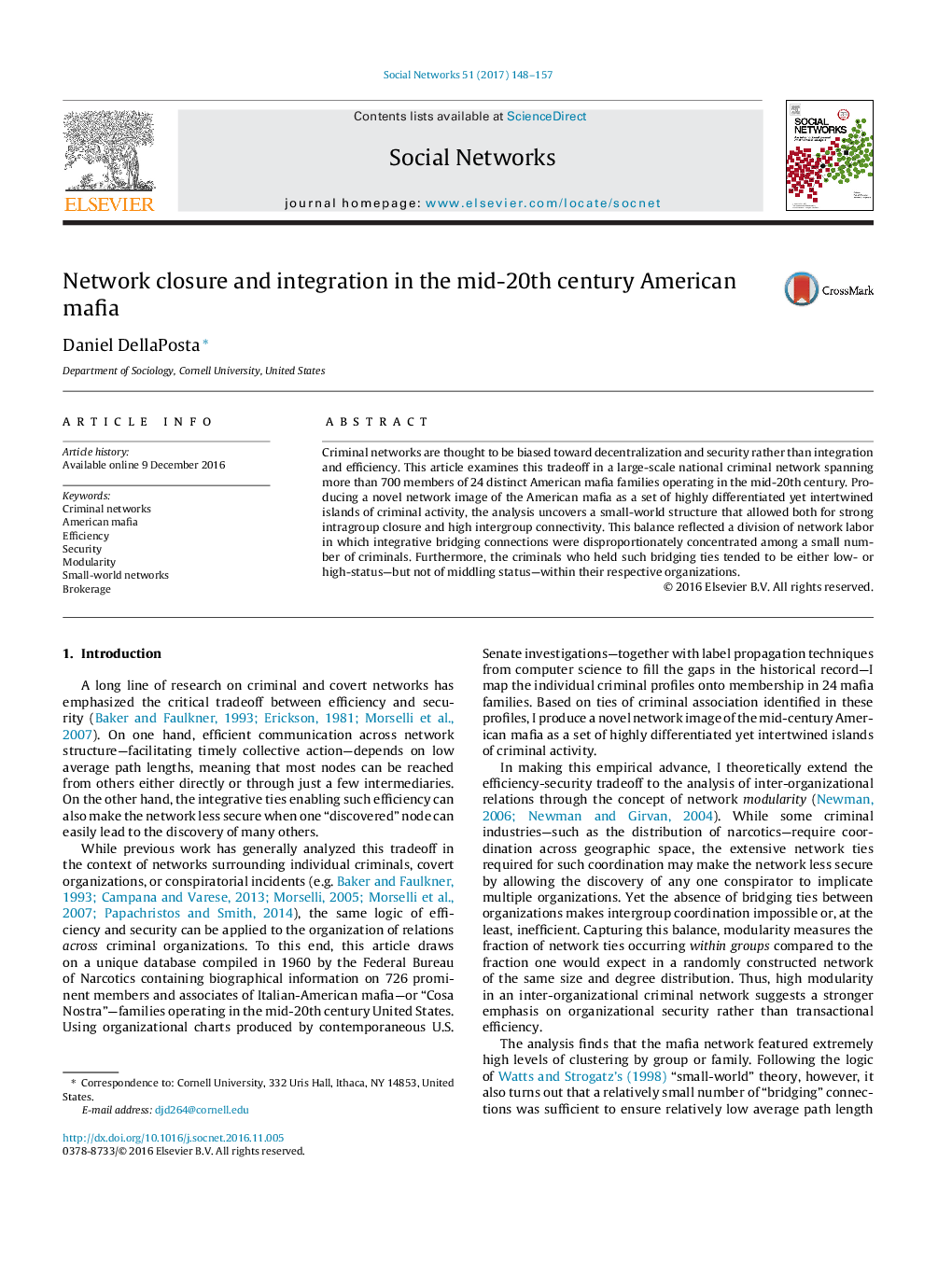| Article ID | Journal | Published Year | Pages | File Type |
|---|---|---|---|---|
| 5126764 | Social Networks | 2017 | 10 Pages |
â¢The mafia network balanced strong closure with substantial geographic integration.â¢Bridging ties were disproportionately concentrated among a minority of actors.â¢Criminals who acted as bridges were generally either low- or high-status.
Criminal networks are thought to be biased toward decentralization and security rather than integration and efficiency. This article examines this tradeoff in a large-scale national criminal network spanning more than 700 members of 24 distinct American mafia families operating in the mid-20th century. Producing a novel network image of the American mafia as a set of highly differentiated yet intertwined islands of criminal activity, the analysis uncovers a small-world structure that allowed both for strong intragroup closure and high intergroup connectivity. This balance reflected a division of network labor in which integrative bridging connections were disproportionately concentrated among a small number of criminals. Furthermore, the criminals who held such bridging ties tended to be either low- or high-status-but not of middling status-within their respective organizations.
